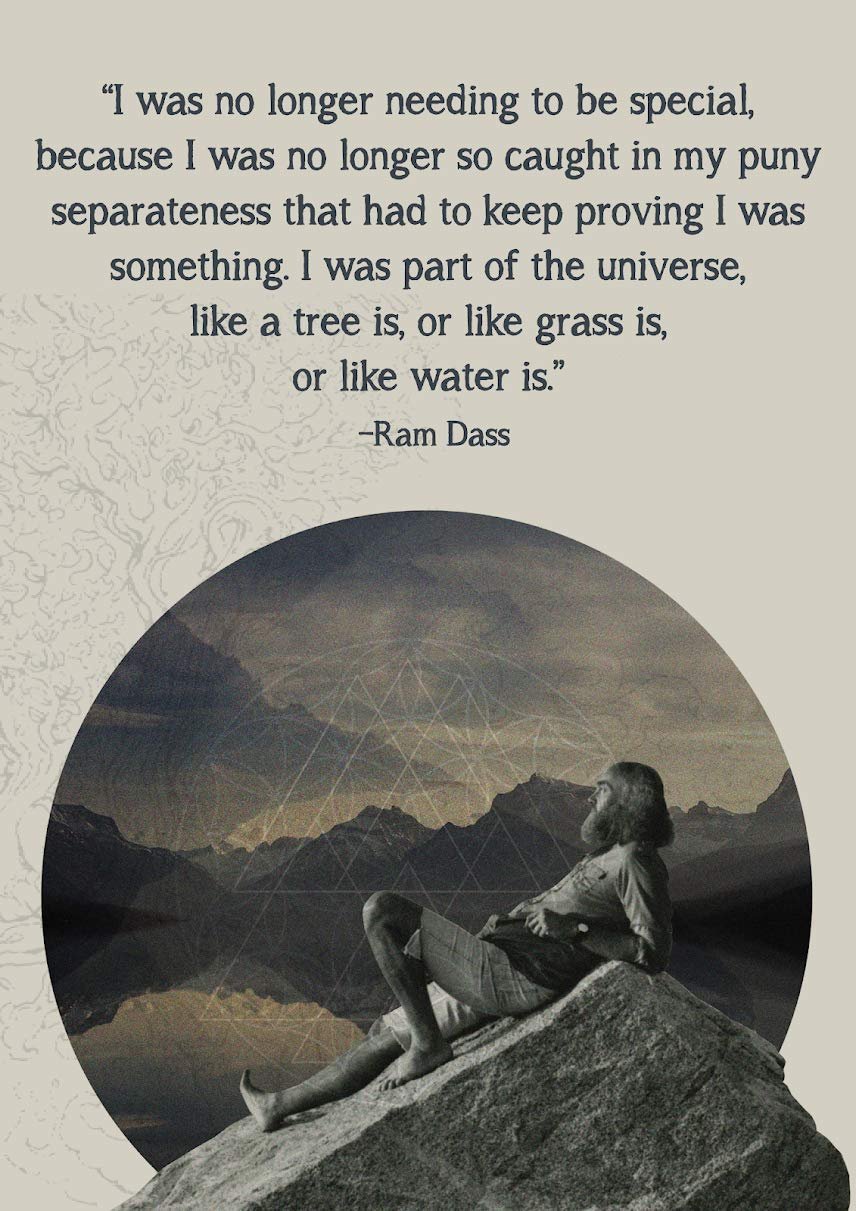7 Powerful Ways to Calm the Restless Mind for Meditation
The Mind and Meditation
Let’s get into the mind and talk about why it’s so important for meditation.
What is the Mind??
What is it? Really, let’s think deeply.
It is what makes up all of our observations of this world and it is how we gather all our input from our senses. It is how we gather our experiences and think through everything.
It is also the “thing” that tells us that we’re depressed we are anxious we’re happy or sad. One of the biggest lessons my teacher taught me is that the pendulum of Maya (our outer world of everyday experiences) always swings. It swings back-and-forth from happiness to misery happiness to misery happiness to misery…
Just like a clock…
tick
tock
tick
tock
And what do we want to do with that pendulum? We want to stick it on the happiness side. Make it stick there.
But that is not how life is, is it? So the mind is the one that tells us all these things… that we’re happy that we’re sad.
Here’s the secret: it is key to remember that this mind is an object and that we are training it. We are not the mind.
We are training it during meditation and the more we train it, the more it will become our ally in this endeavor of sticking to a meditation practice for good.
Putting the Mind into Perspective
Before we get into that, let’s put the mind more into perspective and take a look at the famous Swami Vivekananda quote about the mind.
Picture this:
“There was a monkey, restless by his own nature, as all monkeys are. As if that were not enough some one made him drink freely of wine, so that he became still more restless. Then a scorpion stung him.
When a man is stung by a scorpion, he jumps about for a whole day; so the poor monkey found his condition worse than ever. To complete his misery a demon entered into him.
What language can describe the uncontrollable restlessness of that monkey?
The human mind is like that monkey, incessantly active by its own nature; then it becomes drunk with the wine of desire, thus increasing its turbulence.
After desire takes possession comes the sting of the scorpion of jealousy at the success of others, and last of all the demon of pride enters the mind, making it think itself of all importance. How hard to control such a mind!”
Buddhists also call this attachment or grasping. The mind is always desiring, hence its uncontrolled nature.
In the Bhagavad Gita Chapter 6, Verse 34. Arjuna asks Krishna “The mind is very restless, turbulent, strong and obstinate, O Krishna. It appears to me that it is more difficult to control than the wind.”
Krishna replies: “O mighty-armed son of Kunti [Arjuna], what you say is correct; the mind is indeed very difficult to restrain. But by practice and detachment, it can be controlled.”
Yes, this is our mind and this is everyone’s mind. This isn’t just your mind or my mind it’s everyone’s mind and that’s why it’s so important to meditate.
Because when we meditate we are reversing the “damage” that we’ve done to it for years with uncontrolled thoughts, anxiety, overloading it, and most importantly, not seeing it for what it really is. Which is a tool and an object. Not who we are.
The good news is…we can train the mind so that we can sit down and just be mindful, reflective, and peaceful.
There’s a famous quote the mind can be your greatest ally or it can be your greatest enemy. There’s also a famous saying in Hinduism that says one can have the grace of the guru one can have the grace of God but if one does not have the grace of one’s own mind you will not get anywhere.
This is honestly why I named this blog…mind and mantra.com because it’s so important to remember that the mind is the gatekeeper and it can either hinder or help us. This is key!
So the more that we take care of our mind, our mental health our awareness our mindfulness and most importantly meditate the better in life we will be.
It’s that simple we really have to start with the mind.
So what’s the fix? How can we train the mind? How can we find ways to stick to meditation and be able to create a practice that changes our lives and creates unending joy in our hearts….bliss!
Sounds like I’m overpromising? Nope, I’m not.
Let’s dig in!
Tips to Calm the Mind so we can meditate
#1 Breathwork
Breathwork is also called pranayama but in this recent times, it has been called Breathwork. So the first thing you should do to calm the mind whether it’s agitated with anxiety or just restless is Breathwork. Some common breath work for pranayama you can do is fix the cycle of the breath a repeated number of times or bee breath.
I won’t go into details here because I have vidoes and step by steps in this post here. Make sure you bookmark for future reference.
Start with breathwork for your meditation and notice its effects. You may need to try different techniques until you find the one you like.
#2: Read Authoritative Spiritual Books
Read Read Read. I can’t even count the number of spiritual books I have read over the years in my spiritual journey. Reading just 5 minutes a day will make a huge difference.
Make sure, however, that you’re choosing a book that is higher in nature and what I mean by that is that you are choosing a book that focuses your mind on a higher plane. It is written by someone who is authoritative on spiritual subject matter and most importantly that they are leading a Pure life.
They are literally walking the walk and talking the talk! There are a lot of “gurus” out there so ensure you research the authors. There is a fair share of misleading information about these topics just as a note of caution.
You can check out all of the books I have in my spiritual store at The Deva Shop. You can also order them on Amazon. But browse through the titles and authors so you can get a feel for the kind of authors I am referring to. This is SUPER important.
From my years of research as an educator, I do not take this lightly and only recommend those who I have vetted and can assure they won’t mislead people. These authors I recommend are super high souls.
So the main way to use reading to calm the mind is sit down in your meditation space and start with reading for 5-10 minutes right before you meditate.
*If you need tips on creating your meditation space, read the detailed post here.
#3 Remember What the Mind Truly Is
An External Object
Remember that the mind is an external object it is not who you are. Can you identify exactly where the mind is can you put your finger on it? What does it do during the waking, sleeping, and dream state?
Does it exist at all during the sleep.? If it existed at all times then it would be this permanent thing that is undeniably 100% who you are. But it does not exist at all times….does it?
This is the secret sauce to a deeper meditation it is called discrimination in Vedanta. If you are into philosophy and reading heady books. I highly recommend you read some Vedanta, specifically some Advaita Vedanta which fun fact, is really the same as Buddhism.
Also, there is a swami called the youtube swami because he is so popular for his excellent way of breaking down Vedanta.
Here is a series of his YouTube lectures explaining what Vedanta is and what the mind is. How to view the mind.
See a preview of one of his greats below.
The process of Discrimination
Therefore this is called the process of discrimination and you can use this at the beginning of meditation when you sit down and remind yourself that the mind is a tool—it is a machine and it will continue to go on and on just like a machine does.
So with that you have to remind yourself that mind is not going to stop during meditation. This is key!
I’ll say that again— the mind is not going to stop during meditation but what you can do is find ways to calm it down so that you could have a successful meditation.
Here is an excerpt from book four in the yoga sutras so you can understand the importance of reminding what the mind is:
Verse 19 Book 4 of the Yoga Sutras: “The Mind is not self-luminous, since it can be seen as an object. This is a further step toward overthrowing the tyranny of the "mind": the psychic nature of emotion and mental measuring.
This psychic self, the personality, claims to be absolute, asserting that life is for it and through it; it seeks to impose on the whole being of man its narrow, materialistic, faithless view of life and the universe; it would clip the wings of the soaring Soul.
But the Soul dethrones the tyrant, by perceiving and steadily affirming that the psychic self is no true self at all, not self-luminous, but only an object of observation, watched by the serene eyes of the Spiritual Man.”
Ask Yourself This
Ask yourself this: if you just read, and you can ponder intellectually, that the mind is an external object, when it interrupts your meditation and chats too much and bugs you and drives you bonkers or brings up sad or disturbing thoughts ….should you then just give up or give in and be depressed because you can’t meditate?
A resounding NO! You go on, you push forward, you just. keep. going. because you can intellectually think about the fact that the mind is an object… it is not you. Just keep going.
Do you know in your very being that the mind is not real? have you experienced that it is not real?…most likely not, but intellectually you know, so you keep working with that over and over. And someday….some day, that blessed grace will dawn declare the Saints and Sages.
To quote Swami Vivekananda again: “Arise, Awake, Stop Not ‘Till the Goal is Reached!”
What is a Successful Meditation?
So then what is a successful meditation? Something that fills your cup basically, that reduces your anxiety, that gives you inspiration, that leaves you feeling and wanting more of that meditation.
When you don’t want to leave your meditation seat. That’s setting you up for the habit of repeatedly going back to meditation.
A successful meditation does not mean that you sat there with a calm serene mind and could completely concentrate…nope, we are trying to get to that, but we don’t have to be perfect!
Change is subtle with meditation. We have to keep trying trying trying.
4. Talk to the Mind
There are two ways you can approach this one–1. you can go with the mind as an ally and friend or 2. you can go with you are the disciplinarian of the mind.
The Compassionate Approach with the Mind
When you go with the ally approach, be gentle because you might need that if you are stressed. You may be feeling down on yourself or depressed and you need to be compassionate with yourself. You know yourself, so if you need some soft love, by all means give it to the mind.
Let it know that everything is going to be ok, just say it’s ok, all is well, it’s ok. Even give yourself a mental hug, embrace the pain, smile at it, lovingly tell it that it is ok. I see you, I recognize you, it is ok.
This is an approach I have seen Thich Nhat Hanh use in his many lectures. Because he knows so many people are in pain and if you recognize the pain and tell yourself loving that I see you, you are loved, it magically helps clear a mental path to push forward with meditation.
This is a short, great lecture on how to deal with pain when trying to stay in the present moment.
I go back-and-forth between these two modes a lot.
The Disciplinarian Approach to the Mind
The other approach is to reprimand your mind when you’re feeling strong. Of course, don’t get out of hand. I mean simply telling the mind to shut up….or depending on your personality, you can get sassy with it.
When you just want to sit down and have a good meditation but your mind is just driving you bonkers with your to-do list or what’s wrong or your issues in life but you’re really feeling strong and you can handle it– you can give your mind a scolding.
I’m not kidding this really helps and it works, but again, make sure you’re in the right frame of mind and mood for this one.
So what I mean by giving your mind a good scolding is this. I read in a book from Holy Mother’s (Sri Sarada Devi, the Divine Consort of Sri Ramakrishna) main attendant, Pravrajika Bharatiprana. She became the first president of the Sarada Devi Convent and she said when she sat down to meditate she would say “mind you’ve had enough today. You have done everything. You have thought enough. Now stop! and go leave me alone while I’m trying to meditate” and it works.
I’ve read other spiritual books where the spiritual gurus tell you to tell the mind to wait outside the door. Wait outside until I’m done here meditating. Wait outside and then we can think about all those things when I’m done.
You literally talk to the mind and you know what you will find, is that it works! Of course, it doesn’t shut the mind up completely and it will come back but it will give you enough break to where you can start getting into some good meditating.
When it starts bugging you again. Go back to telling it to wait outside, you’ll be done in a little while and you will address those tasks or concerns then.
5. The “Food” We Intake
Super important for calming the mind to meditate is what we do with the type of food we take in during the day. What I mean by food is everything that we collect through the senses. So what kind of food are you eating?
Are you eating Satvik food? There’s a whole conversation about it in the Bhagavad-Gita where Krishna says that we should be eating satvik food to maintain a controlled life.
So basically satvik food just means eating clean and healthy and he also says to refrain from eating meat. Not too spicy, oily, or heavy. Think of lightness, we don’t want heaviness when we meditate or we will be more prone to falling asleep. Now I know not everybody’s going to be a vegetarian to meditate and that’s OK! But just know that there are prescribed ways of eating that will help your mind stay calmer.
What else are we taking through the senses? What kind of music are you listening to, what kind of conversations are you listening to? How much are you talking all of these things come into effect on how our mind is calm.
Now as a big extrovert and somebody who talks a lot! I always can tell if I have been running my mouth too much and it always leads me to a really rambunctious mind during meditation.
So I have really tried throughout the years to make sure that I am trying to be aware of how much is going out through my mouth ha ha even though this is hard for me. I really try to remember this so that I can meditate better. I have also turned into more of an introvert over the years and I really enjoy being alone for meditation and other practices. I really think these are a part of the subtle changes that happen to people over time from meditation for many years.
6. Brain Dump and Journaling
Next, remember to do a brain dump before you meditate if you’ve got a ton of things on your mind and your to-do list. It really helps to just get on a piece of paper and write down all the things that are just on your to-do list and then write down all the things that are bothering you right now.
You can also do some journaling to help clear the path for meditation. I have a full post on the benefits of journaling as well as journaling prompts here.
7. Visualizations
The next tip is visualizations. Sometimes my mind is so agitated that I gather everything up in my mind… it’s a problem or a bad habit or just something that won’t calm down. I gather it all up and picture of eternal fire in the gigantic, vast universe and I am dumping all of this into the eternal fire of Brahman. That He/She/It will burn it up for me and will never be an issue again.
You can also do visualizations that are listed in Tantric scriptures about turning the mind into a flower and offering at the feet of your chosen deity. You can do this just with a quick visualization and a quick, simple prayer.
Help From Ram Dass
I love the Ram Dass quote where he talks about when you through out the trash, don’t go sifting through the trash. So when you’re done with those issues of your mind don’t sit there during meditation and go through all of your problems… don’t go through your trash. Throw it out, let it be done.
Keep reflecting and using this one and in time your mind will start to agree. I’ve literally visualized throwing out my problems with the garbage and NOT going through it again.
Help from Ramana Maharshi
Or one more quote by Ramana Maharshi you’re already on the train, sit down the luggage. You don’t need to carry the burden put down the luggage you’re already on the train. Meaning you are on the correct path, you are showing up, you are doing it, be patient, progress will come!! I like to visualize myself on this train and just peacefully sitting down, letting…..it. all. go.
Concluding Thoughts
I hope this helped! That was a lot, I know! Make sure you subscribe to my newsletter. All of these meditation bits will soon be out in a digital format for you to download.
I’ve used all of these throughout my 20 years of meditation. I still use them, I kind of rotate back-and-forth according to which mood I’m in.
Progress is slow in meditation, but don’t let that discourage you, instead know that every time you sit, that is progress! There is no such thing as going backward in your progress.
One final note, I have heard my guru say many times…It’s okay if you meditated for 60 minutes and for 59 minutes you were completely distracted, that 1 minute that you thought of the Divine is what matters, that is what will make progress.
Jai Ma Kali!
She is all.
I am cheering you on!
Looking for more resources? Visit my most read blogs and get tons of good info and tips
Meditation for Beginners -Aids to Help you with Your Practice
Numerology 101-How to Lead a More Divinely Guided Life with Numerology
Much Love! Much Light!
I’m cheering you on in your spiritual quest!
Heather Hathaway, M.Ed.











